
Arpi on Tile
Tile’s Evolving Trends Lends to Longevity
Creative Designs Offering Long-Lasting, Distinguished Results
Above: Cooking Surface Prime from ABK Group showcases large format porcelain tile panels in a new light -- as an induction cooking system.
As trade show season approaches, it’s important to be aware of not only what is trending in tile designs, but also what your business can offer in a long-lasting, sustainable product. If you don’t stay up to date, then you’re taking a risk by allowing someone else to fill the void you created.
Let’s consider four trending, yet timeless, tile designs: Patterns: Whether it’s a vintage Spanish tile, handmade cement tile or patterns made using inkjet technology, patterns are hot with designers and consumers. It can be a full-scale pattern or a mix-and-match with solid tile for an accented look – the result can be as eye-catching or daring as your clients choose!
Geometrics: Arabesque, Moorish, subway tile, hexagons, fish scales, circles, and squares – geometry plays an integral role. By providing various, shapely options, the vision of a Spanish hacienda, Italian Riviera villa or French chateau can easily be brought to light.
Mosaics: Mosaics continue to withstand design fluctuations and finicky trends, whether it’s for a backsplash, bathroom or kitchen wall, fireplace, or an entry medallion. Mosaic tile is also considered as an excellent flooring choice when it comes to Universal Design or Aging in Place environments. And, waterjet technology continues to create nuanced designs for chic, luxurious spaces.
Large Format/Porcelain Tile Panels: With nature-inspired designs, large format tiles and porcelain tile panels lend themselves to making an installation look sleek, modern, and cohesive. Current technology effortlessly integrates marble-like veining, as well as wood- and fabric-like ridges and textures. Additionally, glass tile, mixed material (stone, glass, metal) mosaics, and bold colors/patterns continue to enjoy attention from designers and residential clients alike. Creativity with tile and design have nearly endless possibilities, including fireplaces, countertops, book-matched backsplashes and walls, seamless flooring utilizing large format tile panels, and even cooking countertops. Now, let’s look at global trends as it pertains to the designs, uses, tactility, and sustainability of tile.
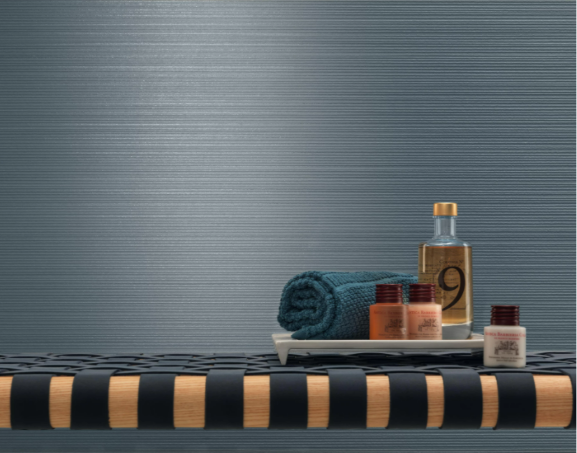
Aplomb from Atlas Concorde features delicate shiny tone-on-tone patterns that emerge from the smooth surface with evocative three-dimensional relief effects
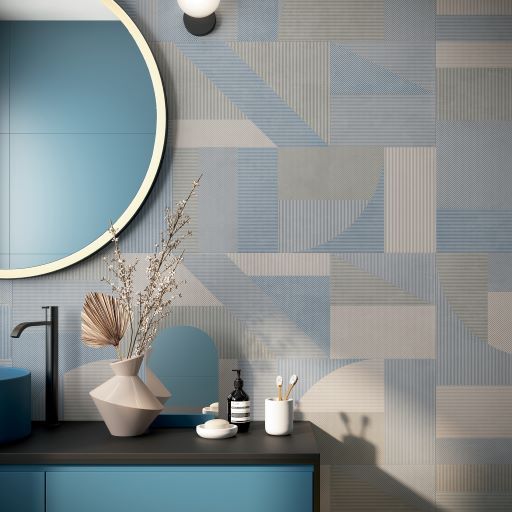
Through its use of color and varied graphic motifs, GIOIA revisits the wallpaper trend and transforms the walls of the home into unique, eye-catching backdrops.
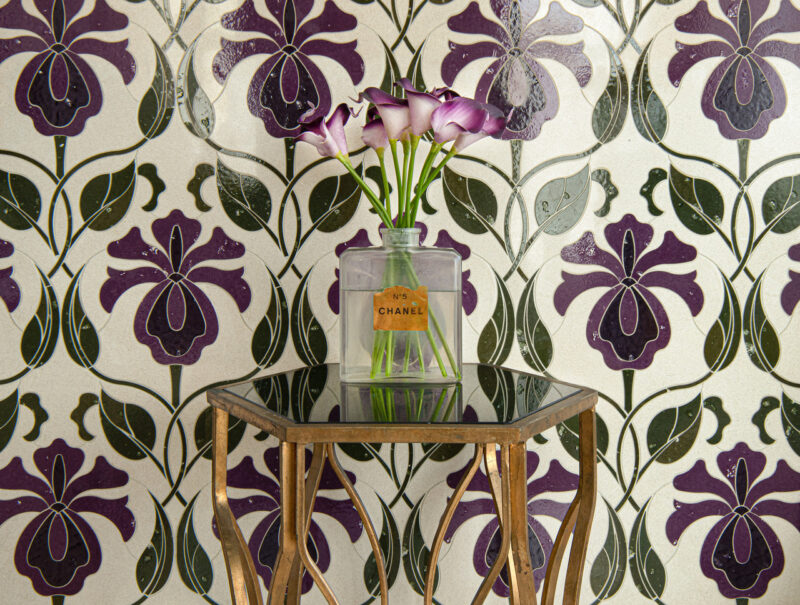
May, from New Ravenna, is a waterjet stone mosaic series from the company’s Femme & Function collection.
U.S. Trends
The top colors, patterns and style trends in the U.S. continue to be dominated by natural stone- and wood-look tile for flooring, while the appeal for timeless subway tile as a backsplash/wall tile remains high. Additionally, glass tile, mixed material (stone, glass, metal) mosaics, and bold colors/patterns continue to enjoy attention from designers and residential clients alike.
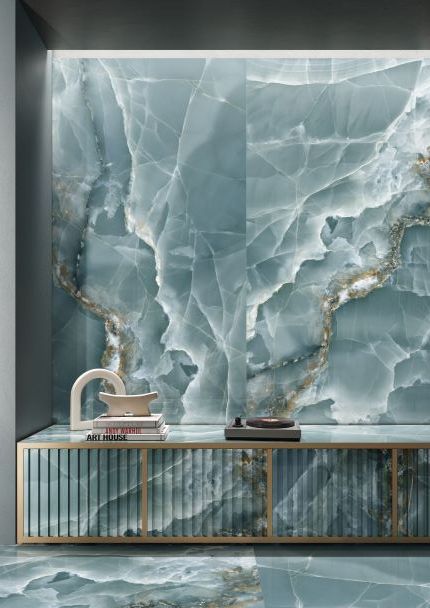
The iconic beauty of onyx is replicated on a ceramic tile surface look in EmilCeramica’s Tele Di Marmo Onyx collection
European Trends
European countries utilize tile throughout their homes. As such, their use of vibrant colors, textures and patterns is prolific. With the increase in bio-mimicry techniques, the essence of outdoor scenery is effortlessly brought indoors. Tactile proficiency is also evident with the variety of wall tile/backsplash options that vary within the ceramic, porcelain, glass, mosaic, and metal tile options offered by European manufacturers. Further, the use of stone-look tile continues to hold its top-tier preference not only for its ease of care compared to its natural counterpart, but also for the countless variety’s inkjet technology produces. Gorgeous bookmark porcelain tile panels, as well as large format terrazzo, integrate beautifully with any kitchen or bath design.

The Cottage Collection from Gayafores is a reproduction of the Cottagecore trend, resulting in a “raw earth” surface with refined graphics, and an updated version of cotto with all its innate natural characteristics.
South America
The top colors, patterns and style trends in the U.S. continue to be dominated by natural stone- and wood-look tile for flooring, while the appeal for timeless subway tile as a backsplash/wall tile remains high. Additionally, glass tile, mixed material (stone, glass, metal) mosaics, and bold colors/patterns continue to enjoy attention from designers and residential clients alike.
Non-Typical Tile Use
Tile is not only a flooring material; it is a fundamental building material. From the early centuries where incorporating ceramic or porcelain materials on the floors, walls, ceilings and building exteriors were the norm, to its current moment of enjoying its place among sustainable building components and products, tile has withstood time and finicky trends. Architects, specifiers, and designers should not only consider using exterior cladding (especially in warmer climate areas) but should also consider tile as a whole structure façade, as decorative screening, or integrating large porcelain tile panels to construct furniture – the possibilities are only limited by the imagination. Interestingly, two Italian manufacturers introduced cooktop systems at Cersaie 2021 that contribute to a seamless, sleek, and multifunctional kitchen. ABK Group revealed a new use for large-format porcelain tile panels – an induction cooking system! According to ABK, Cooking Surface Prime, which is protected by a European patent for an “Induction cooking system on a porcelain surface,” Cooking Surface Prime features “interesting technical innovations, such as a remote control and the use of customized cookware.” Moreover, the company notes that this induction system “integrates into the worktop more quickly than a gas cooker, transferring the heat directly to the cookware without heating up the surface,” thus saving energy and workspace.
This newly developed induction cooking system is covered by the CE Certificate and the ETL Certificate for the United States as well.Lapitec Chef from Lapitec features a patented induction cooking system concealed under its sintered stone worktop. The easy-to-operate system’s worktop is activated with the use of a special silicone Mat. Without this exclusive Mat, the induction unit and its controls are rendered inactive, thereby making the countertop surface safe for other food preparation or meal activities. Because of its non-porous, non-absorbent, and chemical resistant features, the Lapitec Chef system can be used for both indoor and outdoor kitchens.
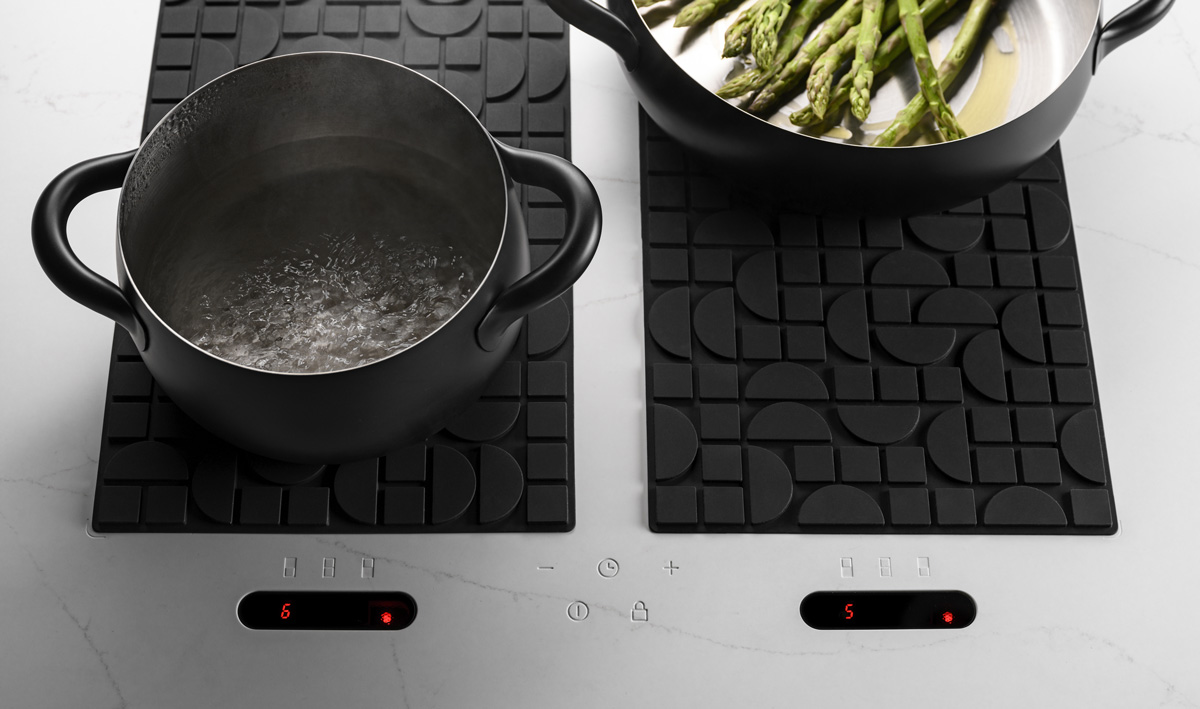
Photo courtesy Lapitec
Though porcelain and ceramic tile manufacturing/use has been around for millennia, it’s how these materials have evolved that provide a fascinating backdrop to what was and what could be. As a sustainable option with limitless possibilities – thanks to textures, designs, patterns, and wondrous glazes – it’s easy to understand how tile’s popularity has never waned.